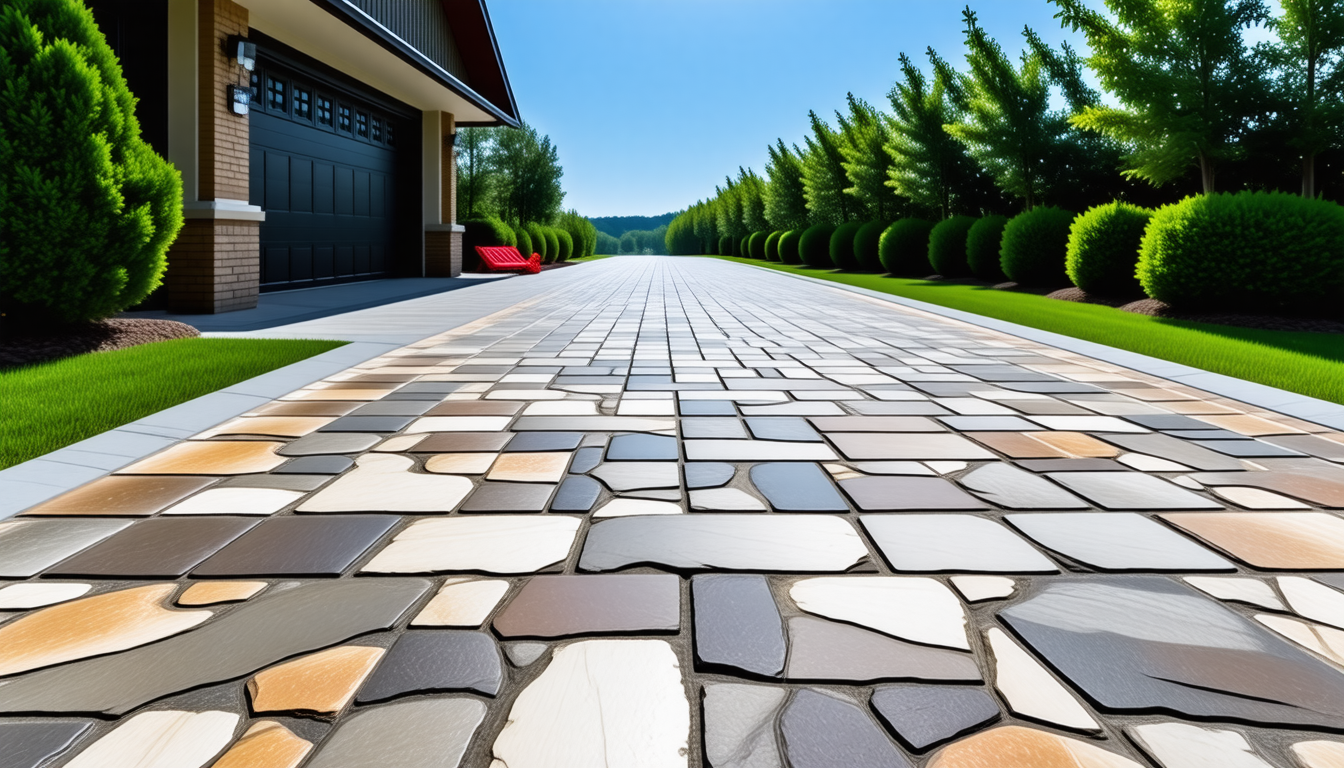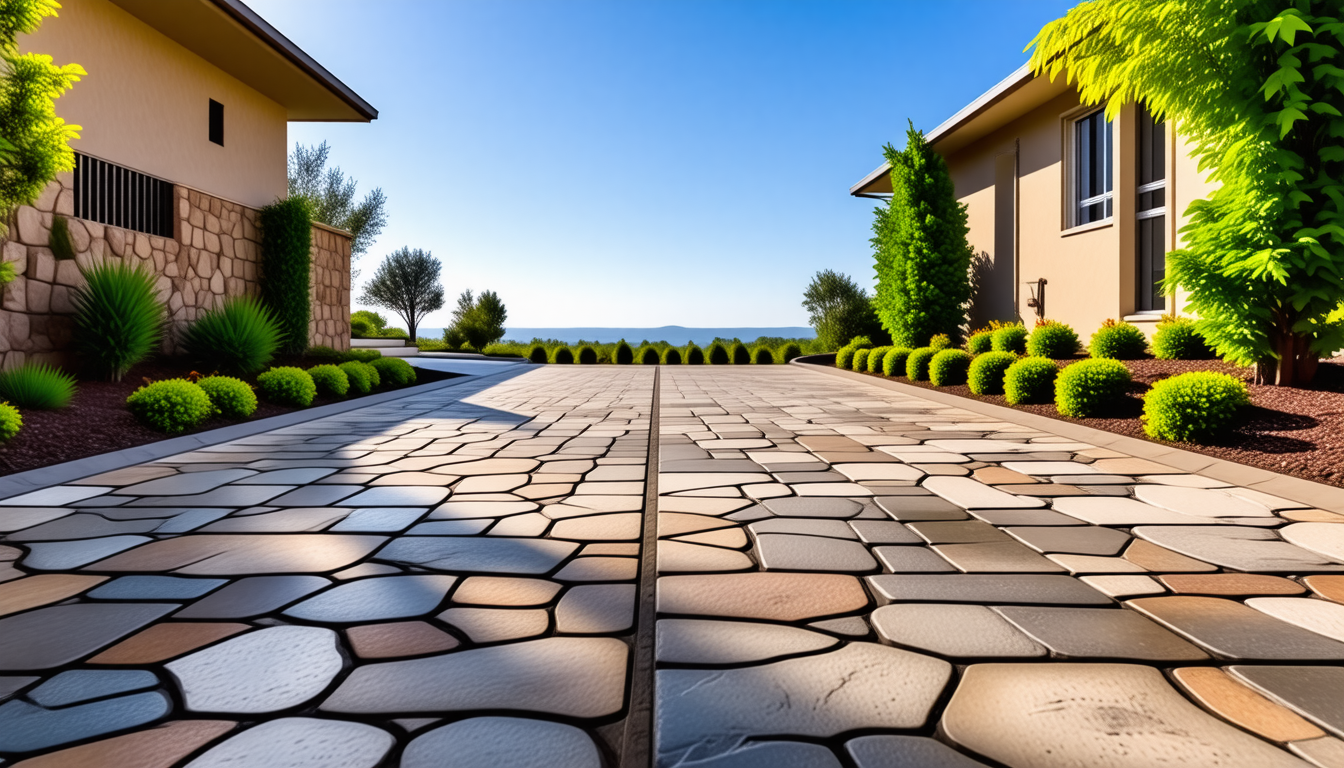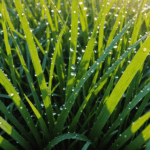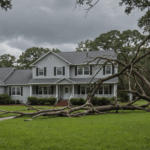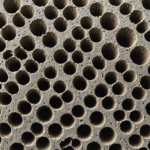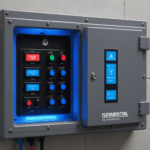When evaluating options for driveway renovation, concrete emerges as a leading choice due to its remarkable durability and versatility. Often regarded as a staple among outdoor surfaces, concrete combines strength with an array of design possibilities, making it a preferred material for those seeking longevity and aesthetic appeal. Its composition of cement, water, and aggregates such as sand or gravel results in a robust, long-lasting surface that can withstand the test of time and elements.
One of the primary advantages of concrete is its impressive durability. With proper installation and maintenance, a concrete driveway can last 30 years or more, providing a reliable surface that can handle vehicles of varying sizes without significant wear or tear. This resilience comes from its inherent structural properties, which provide resistance to cracking, weathering, and erosion, a critical consideration in regions with extreme climate conditions.
In terms of versatility, concrete offers a significant range of customization options, allowing homeowners to harmonize their driveways with the overall design of their properties. Through techniques like stamping, staining, and coloring, it’s possible to replicate the look of more expensive materials, such as stone or brick, at a fraction of the cost. This adaptability not only enhances the visual appeal but also increases the property’s value, making it an excellent investment for future resale.
Moreover, concrete driveways offer benefits that extend beyond aesthetics and durability. They require minimal upkeep, typically involving simple cleaning and occasional resealing to maintain their integrity and appearance. This translates to cost savings over time, as the need for repairs or replacements is significantly reduced compared to other surface materials.
The economic aspect of choosing concrete cannot be overlooked. While the initial installation cost may be higher than options like gravel or even basic asphalt, the low maintenance requirements and exceptional lifespan contribute to a lower overall cost of ownership. Additionally, the adaptability of concrete means it can be tailored to fit various budgets and projects without sacrificing performance.
To put concrete’s advantages into perspective, consider the following comparison table for clarity:
| Property | Concrete | Gravel | Asphalt |
| Durability | High | Moderate | Moderate |
| Versatility | High | Low | Moderate |
| Initial Cost | Moderate to High | Low | Moderate |
| Maintenance | Low | High | Moderate |
| Lifespan | More than 30 years | 5-10 years | 15-20 years |
Taking these factors into account when following a material guide for a driveway renovation, concrete proves itself to be a highly advantageous option. It combines superior durability with the ability to adapt to any design vision, offering both practical and visual benefits that make it an investment worth considering for long-lasting outdoor surfaces.
Asphalt: affordability and resilience
When considering driveway renovation, asphalt stands out for its balance of affordability and resilience. As a favored material for homeowners looking to build cost-effective yet durable outdoor surfaces, asphalt provides a practical solution. Composed of aggregate materials like sand, gravel, and crushed stone, mixed with a bitumen binder, asphalt driveways offer numerous advantages.
To begin with, the cost-effectiveness of asphalt makes it an attractive choice for many. The initial expense of installing an asphalt driveway is typically lower than that of concrete, making it a budget-friendly option for those looking to maximize their investment in a driveway renovation. The price efficiency extends from the materials to the installation process, as laying asphalt is usually quicker and less labor-intensive than other materials, thereby reducing the overall labor costs.
The durability of asphalt is another critical factor in its favor. Asphalt driveways typically have a lifespan of 15 to 20 years, although this can be extended with proper maintenance. The material’s flexibility allows it to withstand varying temperatures and minor ground movements without cracking, which is particularly beneficial in climates that experience freeze-thaw cycles. To ensure the longevity of an asphalt driveway, here’s a step-by-step guide on maintenance:
- Regular Cleaning: Begin by sweeping the driveway to remove dirt and debris. Address any oil stains promptly as they can degrade the asphalt.
- Sealcoating: Every 2-3 years, apply a seal coat to protect the asphalt from moisture, UV damage, and wear. This process involves cleaning the surface, filling cracks, and applying the sealant uniformly across the driveway.
- Crack Repair: Inspect your driveway periodically for any cracks. Use a quality crack filler to seal any gaps, ensuring they don’t allow water penetration, which can lead to further deterioration.
- Edge Care: Maintain the edges by removing grass and weeds that can penetrate and destabilize the asphalt over time.
- Snow Removal: During winter, use plastic shovels rather than metallic ones to prevent surface damage. Avoid de-icing products that contain chemicals harmful to asphalt, opting instead for sand or kitty litter for traction.
Through these maintenance practices, homeowners can not only extend the life of their driveway but also preserve its aesthetic appeal. The smooth, black finish of freshly laid asphalt offers a neat and professional look to outdoor surfaces, enhancing the overall curb appeal of a property.
Moreover, for those using asphalt in their material guide for renovation projects, it’s essential to consider environmental factors. Modern advancements have led to the development of permeable asphalt, which assists in reducing surface runoff and can be an environmentally friendly choice for sustainable construction.
In summary, the affordability and resilience of asphalt make it a tried-and-true option for driveway renovations. With appropriate care and maintenance, this material can provide lasting functionality and contribute to the visual appeal of your home.
Gravel: simplicity and cost-effectiveness
Choosing gravel for driveway renovation presents a straightforward, budget-friendly solution that suits a variety of needs and preferences. This material, primarily composed of small stones and pebbles, offers several key benefits that make it a popular choice among homeowners seeking both simplicity and cost-effectiveness in their outdoor surfaces.
One of the primary attractions of gravel is its low initial cost. Compared to materials like concrete or even asphalt, gravel is significantly cheaper, not only in terms of material costs but also installation expenses. This cost-effectiveness makes it an excellent option for homeowners looking to undertake driveway renovations without breaking the bank. Moreover, the ease of installation means that gravel driveways can often be a feasible DIY project, further reducing labor costs.
Gravel driveways offer a level of simplicity that is hard to beat. The materials are readily available, and the installation process is straightforward, involving little more than grading the area, laying down the gravel, and compacting it to create a stable surface. This simplicity also translates to flexibility; gravel can easily be added or reshaped according to changing landscape needs or personal preferences. This adaptability makes it an appealing choice for those who anticipate potential driveway modifications in the future.
In terms of maintenance, gravel driveways may require more frequent attention than other materials but remain manageable with regular upkeep. Raking and leveling the gravel periodically helps maintain an even surface, while replenishing gravel as needed ensures continued coverage and traction. This ongoing maintenance, while requiring attention, is generally uncomplicated and does not involve the significant expense often associated with other materials.
Another advantage of gravel is its permeability, which allows for excellent drainage. Rainwater quickly infiltrates through the gravel, reducing the risk of runoff and minimizing the potential for puddles or erosion, a critical consideration in areas prone to heavy rain. This quality makes gravel not only practical but also an environmentally friendly option for those seeking sustainable solutions for their driveway renovation.
Furthermore, gravel driveways can enhance the aesthetic appeal of a property with their natural, rustic appearance. The variety of stone types, colors, and sizes available allows homeowners to customize their gravel driveways to complement their overall landscape design, enhancing curb appeal without incurring significant costs.
While gravel may not offer the durability of materials like concrete or the sleek finish of asphalt, its unbeatable combination of cost-effectiveness, ease of installation, and adaptability makes it a worthwhile consideration for any material guide. When evaluating outdoor surfaces, especially in rural or eco-conscious settings, the benefits of gravel shine through, providing a practical and visually pleasing option for those seeking a no-fuss driveway solution.
Pavers: aesthetic appeal and flexibility
When it comes to selecting materials for a driveway renovation that balances form and function, pavers are an attractive option thanks to their exceptional aesthetic appeal and versatility. Offered in a wide range of styles, colors, and patterns, pavers can significantly enhance the visual appeal of outdoor surfaces while providing durability and practical benefits that are difficult to match.
Perhaps one of the most notable advantages of using pavers is their ability to offer a customized design that meets the specific tastes and needs of any homeowner. Whether you prefer the classic look of cobblestone, the sleekness of contemporary geometric patterns, or the warm feel of natural stone, there is a paver style to complement every architectural theme and landscape design. This adaptability ensures that your renovated driveway will not only stand out but also harmonize beautifully with the surrounding environment.
In addition to their aesthetic benefits, pavers are renowned for their flexibility and resilience. Unlike large concrete slabs or single-surface asphalt, individual pavers interlock, allowing for minor movements and adjustments over time without leading to significant cracking or surface damage. This characteristic is particularly valuable in regions that experience freeze-thaw cycles or slight ground shifts, as the pavers can adjust without compromising the structural integrity of the driveway.
Moreover, the installation of pavers typically involves creating a robust base layer and joining the individual units with sand or other flexible materials. This methodology not only adds strength to the driveway but also facilitates drainage, reducing issues commonly associated with water runoff. By allowing water to seep through the gaps between pavers, drainage is improved, minimizing the potential for pooling and reducing erosion around the driveway’s margins.
Maintenance and repairs are straightforward with pavers, adding yet another dimension to their appeal in a material guide for outdoor surfaces. For instance, if a single paver becomes stained or damaged, it can be replaced individually without disturbing the rest of the driveway—a convenience not available with other materials like poured concrete. Regular maintenance involves simple tasks such as sweeping to remove debris and occasional cleaning with soap and water to maintain their pristine appearance.
While the initial cost of paver installation might be higher compared to asphalt or gravel, the minimal maintenance requirements and durability can lead to significant savings over time. The longevity of a paver driveway often surpasses other materials, providing homeowners with a long-term investment that enhances both utility and property value.
In summary, the unparalleled aesthetic options and practical benefits of pavers make them an excellent choice for those planning a driveway renovation. Their ability to transform outdoor surfaces into beautiful, functional spaces that endure for years highlights the value of considering pavers in any comprehensive material guide.
Interlocking bricks: strength and customization
Interlocking bricks are an outstanding choice for driveway renovation due to their exceptional strength and potential for customization. These bricks offer a combination of durability, longevity, and a broad range of aesthetic options, making them a preferred material for outdoor surfaces that need to withstand daily use and weather conditions while also contributing to the property’s visual appeal.
One of the most significant advantages of interlocking bricks lies in their inherent strength. Made from materials like concrete or clay, these bricks are designed to endure heavy loads, ensuring that driveways remain intact and functional for many years. The interlocking aspect of the design means that each brick supports its neighbors, distributing weight evenly and reducing the likelihood of cracking and movement. This structural integrity is particularly beneficial in areas with significant temperature fluctuations or ground movement, where traditional materials might fail.
Customization options add another layer of appeal to interlocking bricks in any material guide. Homeowners can choose from a variety of shapes, colors, and textures, allowing them to tailor the driveway to complement the architectural style of their homes. Whether aiming for a rustic, old-world appearance or a sleek, modern finish, interlocking bricks provide the versatility to achieve a wide array of looks. This adaptability extends to layout patterns as well—such as herringbone, basket weave, or stretcher bond—each of which adds a unique visual dimension to the driveway.
In terms of installation, the process involves laying the bricks over a compacted base, locking them together into place, and filling the joints with sand or similar materials. This method not only strengthens the overall structure but also enhances its resilience to water infiltration. Effective drainage is a vital consideration in driveway renovation, as it prevents erosion and pooling, helping maintain the surface’s integrity over time.
The maintenance needs of interlocking brick driveways are minimal, contributing to their appeal. If a brick becomes damaged or stained, it is a simple matter to replace it without disturbing the rest of the driveway—saving both time and money. Routine maintenance includes sweeping to keep dirt and debris at bay and occasionally re-sanding the joints to maintain stability and appearance.
While the initial installation cost of interlocking bricks can be higher than that of asphalt or gravel, the long-term benefits often justify the investment. The low maintenance requirements, combined with their durability and aesthetic value, mean that they provide excellent long-term value, both in terms of functionality and enhanced curb appeal.
In conclusion, selecting the best material for a driveway depends on balancing cost, durability, and aesthetic preferences. Concrete and asphalt offer durability and resilience at varied costs, while gravel and pavers provide cost-effectiveness and flexibility in design. Interlocking bricks, with their strength and customizability, stand out for those seeking a balance of beauty and longevity. Whichever material you choose, considering its performance, maintenance requirements, and visual impact will ensure a driveway that enhances your property’s value and appeal for years to come.
